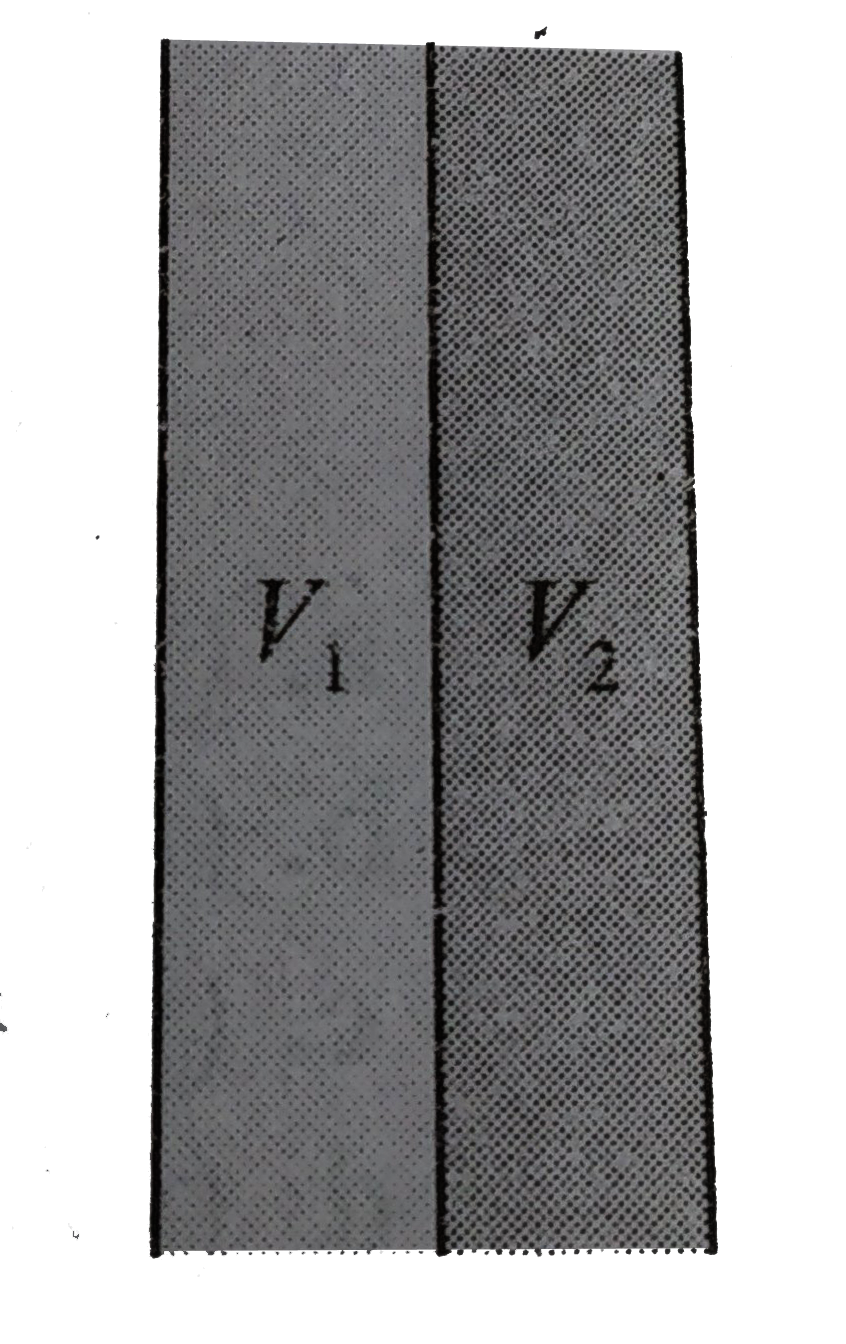Two electrons are moving with the same speed v. One electron enters a region of uniform electric field while the other enters a region of uniform magnetic field,then after sometime if the de-Broglie wavelenths of the two are λ1 and λ2 then :
λ1=λ2
λ1>λ2
λ1<λ2
λ1>λ2 or λ1<λ2
The correct Answer is:D
To solve the problem, we need to analyze the behavior of two electrons moving with the same initial speed v when they enter different fields: one enters an electric field and the other enters a magnetic field. We will derive the de-Broglie wavelengths λ1 and λ2 for each case and compare them.
1. Initial de-Broglie Wavelength Calculation:
The de-Broglie wavelength λ of a particle is given by the formula:
λ=hmv
where h is Planck's constant, m is the mass of the electron, and v is its velocity.
For both electrons before entering the fields, their initial de-Broglie wavelengths are:
λ0=hmv
2. Electron in Electric Field:
When the first electron enters a uniform electric field E, it experiences a force F=eE (where e is the charge of the electron). This force causes the electron to accelerate:
F=ma⟹a=eEm
The electron will gain velocity due to this acceleration. If we denote the final velocity after some time as vT, we can say:
vT=v+at=v+eEmt
The de-Broglie wavelength for the electron in the electric field becomes:
λ1=hmvT=hm(v+eEmt)
3. Electron in Magnetic Field:
The second electron enters a uniform magnetic field B. The magnetic force acts as a centripetal force, causing the electron to move in a circular path. The magnetic force is given by:
F=evB
This force provides the necessary centripetal force:
evB=mv2r⟹r=mveB
The speed of the electron remains constant in a magnetic field (it does not gain or lose speed, only changes direction), so its de-Broglie wavelength remains:
λ2=hmv
4. Comparison of Wavelengths:
Now we compare λ1 and λ2:
- Since vT>v for the electron in the electric field, we have:
λ1=hm(v+eEmt)<hmv=λ2
- Therefore, we conclude that:
λ1<λ2
Final Result:
The relationship between the de-Broglie wavelengths is:
λ1<λ2
The de-Broglie wavelength λ of a particle is given by the formula:
λ=hmv
where h is Planck's constant, m is the mass of the electron, and v is its velocity.
λ0=hmv
When the first electron enters a uniform electric field E, it experiences a force F=eE (where e is the charge of the electron). This force causes the electron to accelerate:
F=ma⟹a=eEm
The electron will gain velocity due to this acceleration. If we denote the final velocity after some time as vT, we can say:
vT=v+at=v+eEmt
The de-Broglie wavelength for the electron in the electric field becomes:
λ1=hmvT=hm(v+eEmt)
The second electron enters a uniform magnetic field B. The magnetic force acts as a centripetal force, causing the electron to move in a circular path. The magnetic force is given by:
F=evB
This force provides the necessary centripetal force:
evB=mv2r⟹r=mveB
The speed of the electron remains constant in a magnetic field (it does not gain or lose speed, only changes direction), so its de-Broglie wavelength remains:
λ2=hmv
Now we compare λ1 and λ2:
- Since vT>v for the electron in the electric field, we have:
λ1=hm(v+eEmt)<hmv=λ2
- Therefore, we conclude that:
λ1<λ2
The relationship between the de-Broglie wavelengths is:
λ1<λ2
Topper's Solved these Questions
- BOOK - MOTIONCHAPTER - MODERN PHYSICS -1EXERCISE - EXERCISE-2(LEVEL-II)15videos
MODERN PHYSICS -1
- BOOK - MOTIONCHAPTER - MODERN PHYSICS -1EXERCISE - EXERCISE-3( LEVEL-I)25videos
MODERN PHYSICS -1
- BOOK - MOTIONCHAPTER - MODERN PHYSICS -1EXERCISE - EXERCISE-150videos
MODERN PHYSICS -1
- BOOK - MOTIONCHAPTER - MODERN PHYSICS - 2EXERCISE - EXERCISE - 4 (Level -II) PREVIOUS YEAR - JEE ADVANCED28videos
MODERN PHYSICS - 2
- BOOK - MOTIONCHAPTER - NEWTON'S LAWS OF MOTION & FRICTION EXERCISE - Exercise - 3 Section-B12videos
NEWTON'S LAWS OF MOTION & FRICTION
Similar Questions
Two protons are having same kinetic energy. One proton enters a uniform magnetic field at right angles ot it. Second proton enters a uniform electric field in the direction of field. After some time their de Broglie wavelengths are λ1andλ2 then (a) λ1=λ2 (b) λ1<λ2 (c) λ1>λ2 (d) some more information is required
View SolutionAn electron does not suffer any deflection while passing through a region of uniform magnetic field. What is the direction of the magnetic field?
View Solution
Knowledge Check
- Question 1 - Select One
Path of an electron entering perpendicular in a uniform magnetic field will be:
ALineasrBparaobolicCellipseDcircular - Question 2 - Select One
A particle of mass m and charge Q moving with a velocity v enters a region on uniform field of induction B Then its path in the region is s
AAways circularBcircular, If v×B=0Ccircular,If v.B=0DNone of these - Question 3 - Select One
When an electron moving with constant speed enters in a magnetic field at 60∘ then its de- broglie wave length.
AIncreaseBDecreasesCRemains constantDNone
An electron does not suffer any deflection while passing through a region of uniform magnetic field. What is the direction of the magnetic field ?
View SolutionA charged particle enters a region of uniform magnetic field at an angle of 85∘ to the magnetic line of force . The path of the particle is a circle .
View SolutionAn electron traveling in a uniform electric field passes from a region of potential V1 to a region of higher potential V2. Then
 View Solution
View SolutionAn electron is released from rest in a region of uniform electric and magnetic fields acting parallel to each other. The electron will
View SolutionElectron oving with different speeds enters a transverse uniform magnetic field. They will describe circular path
View Solution

